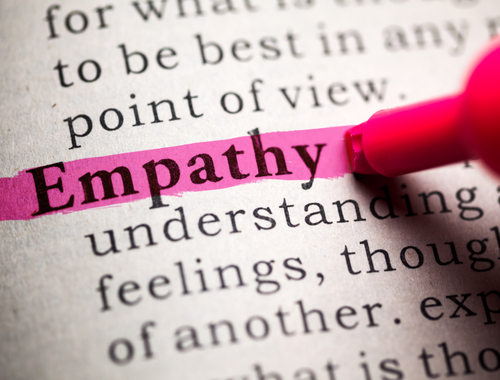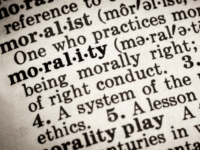
What is Empathy?
The word “empathy” is derived from the Greek terms “em,” meaning “in,” and “pathos,” meaning “feeling.” The German psychologist and philosopher, Theodor Lipps used the term “empathy” in the early 20th century to describe the experience of “feeling into” another person. Since then, the idea of empathy has been developed and applied in a number of disciplines, including psychology, sociology, and philosophy.
Empathy has been investigated in psychology as a crucial component of social cognition and emotional intelligence. It has been regarded in sociology as an essential element of social interaction and relationship building. It has been investigated in philosophy as a foundation for moral reasoning and ethical conduct.
Empathy is the capacity to comprehend and experience another person’s feelings. It is noticing and imagining what another person might be feeling or going through, and then appropriately expressing concern or understanding in return. Empathy promotes healthy interpersonal relationships and can advance one’s development and wellbeing (Leonard, 2018).
Daniel Goleman (1995), a psychologist and science journalist, identified three types of empathy:
Cognitive Empathy
This is the capacity to understand another person’s viewpoint without necessarily feeling the same emotions. An example is when we picture what it could be like to be that person at that time. Through cognitive empathy, we can have a better insight regarding how someone thinks about a situation.
Emotional Empathy
This kind of empathy is the capacity to experience another person’s feelings bodily. It enables people to be sensitive to the emotions of others and to experience such feelings. For instance, we show emotional empathy when we genuinely feel concerned for a friend who just delivered bad news.
Compassionate Empathy
This type of empathy combines both cognitive and emotional empathy. It involves understanding someone else’s feelings and experiencing empathy for them, while also feeling a genuine desire to help and make a positive difference.
Goleman argues that all three types of empathy are important in different ways and that they all contribute to our overall emotional intelligence. For example, cognitive empathy helps us to understand others, emotional empathy helps us to connect with them, and compassionate empathy helps us to act and make a positive difference in their lives.

What is Sympathy?
The modern English word “sympathy” is derived from the Greek word “sympatheia,” which combines the prefix “syn-” meaning “together,” with “pathos,” meaning “feeling.” This reflects the idea of shared feeling or connection that is central to the concept of sympathy which is a feeling of concern, pity, or sorrow for the troubles, hardships, or sufferings of another person (Davis, 2020). It involves recognizing and acknowledging someone else’s emotional pain and feeling a sense of sadness for their situation.
A sympathetic approach simply offers a cursory comprehension of another person’s circumstance. Unlike empathy, the ensuing concern is from one’s own perspective and not from the other. For instance, a sympathizing person may give unsolicited advice and pass judgement with the intention of helping the other person.
Sympathy can be expressed verbally and nonverbally. For instance, we send cards and messages to express our condolences or “sympathies”. We say how “sorry” we are when someone is having a difficult time. We also pat someone on the shoulder or touch the other person’s arm as a sign of feeling sorry.
What are the Similarities between Empathy and Sympathy
Similarity in Terms of Expression
Both may be expressed nonverbally and verbally. For example, patting someone on the back and saying “I’m sorry” can express empathy and sympathy.
Similarity in Terms of Caring
Just like sympathy, empathy involves being concerned and having a sense of care for the other person.
Similarity in Terms of Support
Empathy and sympathy include the desire to offer help or support to others. Both can be expressed as offering a shoulder to cry on or practical help.
Similarity in Terms of Connection
Both empathy and sympathy deal with the link of one’s feelings or thoughts with the other individual.
Summary:
- Both empathy and sympathy may be expressed nonverbally and verbally.
- Empathy, just like sympathy involve a sense of caring.
- Sympathy and empathy are related to support and connection.
Frequently Asked Questions:
What is the commonality between sympathy, empathy, and compassion?
What these three have in common is that they all involve concern for the feelings and experiences of others.
Are empathy and sympathy mutually exclusive?
They are not mutually exclusive as they can overlap and occur together. For instance, a person who is initially sympathetic can further develop empathy and understand the other person’s experience more deeply.
What is the difference between empathy and sympathy?
Empathy goes deeper than sympathy. It is the capacity to comprehend and experience another person’s feelings. It is noticing and imagining what another person might be feeling or going through, and then appropriately expressing concern or understanding in return. On the other hand, a sympathetic approach simply offers a superficial comprehension of another person’s circumstance. Unlike empathy, the ensuing concern is from one’s own perspective and not from the other.
What does having empathy mean?
Having empathy helps us to understand others (cognitive empathy), to connect with them (emotional empathy), and to act and make a positive difference in their lives (compassionate empathy).
What are the 3 types of empathy?
Goleman identified 3 types of empathy: cognitive, emotional, and compassionate.
Do people with ADHD feel empathy?
Yes, just like anyone else, people with attention deficit hyperactivity disorder are capable of feeling empathy. However, there may be instances when some individuals with ADHD and other conditions may experience difficulties with certain aspects in relation to empathy. For instance, it may be challenging for them to understand social cues and regulate their own emotions. It is crucial to note that each person is unique and some people with ADHD may struggle with empathy while others may have a high level of empathy.
Does sympathy mean being sorry?
Sympathy involves being sorry for others’ misfortune. It is feeling a sense of sadness for others’ negative situations.












Leave a Reply